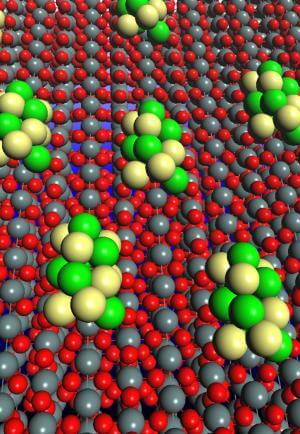Inexpensive, lightweight and stable fuel cells based on formic acid may revolutionize the portable electronics market

Cheap, lightweight and stable fuel cells based on formic acid may revolutionize the portable electronic device market. An innovative catalyst developed at the Institute of Physical Chemistry of the Polish Academy of Sciences will enable widespread use in fuel cells, the researchers explain.
It is almost impossible to find a consumer of portable electronic devices who is not afraid of power supply problems. Batteries drain quickly and require frequent replacement or charging for a long time. fuel cells (The term on Wikipedia) will be able to significantly improve the convenience of using electronic devices. Their commercialization, on the other hand, is delayed due to many technological challenges. An innovative catalyst developed at the Institute of Physical Chemistry of the Polish Academy of Sciences in Warsaw marks an important milestone on the way to the distribution of cheap, lightweight, environmentally friendly and stable fuel cells based on formic acid.
A fuel cell is a device that converts chemical energy into electricity. The voltage is obtained directly by burning fuel in the presence of catalysts found in the two electrodes of the cell. "The theoretical conversion efficiency of chemical energy into electricity in cells may reach one hundred percent. The best fuel cells available today, which operate on burning hydrogen, reach a practical efficiency of only 60%. For comparison, the efficiency of low-compression engines reaches up to 20%," says Dr. Andrzej Borodziński, from the Institute of Physical Chemistry of the Polish Academy of Sciences.
The biggest obstacle facing the widespread commercialization of hydrogen cells is the storage of the hydrogen. It turned out that the issue is very challenging from a technological point of view and it is still waiting for satisfactory solutions. An alternative to fuel cells powered by pure hydrogen is a methanol-based fuel cell. However, methanol is a toxic substance and the cells operated with it must contain catalysts based on the precious metal platinum. In addition, a low amount of energy is obtained from methanol-based fuel cells and they operate at relatively high and dangerous temperatures of about ninety degrees Celsius.
An alternative solution to the dangerous methanol is formic acid. In this case, the reactions take place at room temperature, and the efficiency and utilization of these cells is much higher than the methanol alternative. Moreover, the storage and transportation of formic acid is easy. However, in order to obtain fuel cells based on formic acid which are reliable in their operation, a stable catalyst is needed.
"The catalyst we developed has a lower initial activity than existing catalysts consisting of pure palladium metal. However, this difference disappeared for him within two hours of the start of his activity, and from then on he becomes even better. Our catalyst remains stable over time, while the activity of pure palladium-based catalysts fades over time," the researcher notes.
Another advantage of the developed catalyst, which is particularly important from an economic point of view, is its ability to preserve its properties while operating in low purity formic acid. Such formic acid can be produced in large quantities, even from biomass, so that the fuel for these cells can be very cheap. Formic acid produced from biomass will be a fuel that is fully environmentally friendly. The reaction that occurs with formic acid in the fuel cells leads to receiving the products water and carbon dioxide. Carbon dioxide, in fact, is a greenhouse gas, but the biomass itself is obtained from plants that use carbon dioxide for their growth. As a result, formic acid obtained from biomass and consumed in the fuel cells will not bring about a change in the carbon dioxide balance in the atmosphere.
Formic acid-based fuel cells could have many applications. They will be particularly suitable in portable electronic devices - mobile phones, laptops or GPS-based devices. In addition, they will be able to be installed as sources of energy supply in vehicles, from wheelchairs to electric bicycles to yachts. The researchers anticipate that the first prototype of a commercial device based on formic acid fuel cells will be ready within a few years.
The news about the study

4 תגובות
Formic acid is a methanoic acid which means the simplest carboxylic acid.. You will not need solar or wind energy to produce it. Bacteria do this very nicely. Decomposing organic matter into acid gives them energy, but it will be necessary to provide them with certain nutrients (nitrogen, phosphorus, sulfur).
to 1. Apparently the reference to organic waste is not unprocessed.
Since Dr. Nachmani (2) wrote about methanol produced from a simple solution of
Fruits as a basis for the production of the acid.
Assuming the device meets expectations, the next task will be production
Formic acid (or similar substance) in renewable energy production facilities
(wind, waves, sun).
Greetings.
A number of simple chemicals, such as methanol, can be produced from biomass.
One of the possible products is a carboxylic acid known as "formic acid".
What is meant by "formic acid produced from biomass". I know approximately what biomass is (all organic matter) but what is meant in the context of the sentence?
Thanks